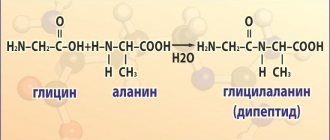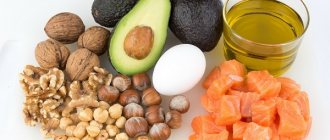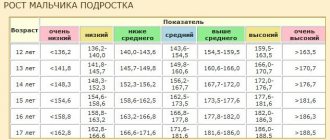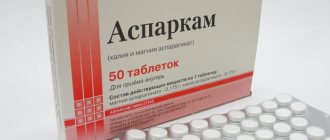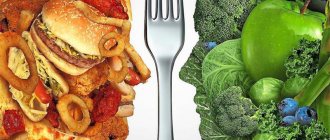general characteristics
Content:
- general characteristics
- The nutritional value
- Pork: benefits and harm to the body
- Side effects of eating pork
- Myths about pork
- How to choose pork
- How to reduce the calorie content of pork
- What goes with it?
Pork is the most consumed red meat in the world. Especially popular in East Asian countries, but “outlawed” for Jews and Muslims.
It is a product rich in proteins, minerals and many vitamins.
By the way, pork can provide a person with almost the full spectrum of B vitamins, which is not typical for other types of meat. Lean cuts (removed from lard) are an excellent choice for most dishes.
And tenderloin and shoulder are even more dietary meats than chicken.
In fruits
Fruits do not have the highest protein content and should not even be considered as a main source. The only advantage of fruits over vegetables is that protein is not lost during cooking, which means that both in canned form and in jam the level of protein will be similar to fresh fruits.
Based on 100 grams of product, the following comes out:
| Apricots | 0.9g |
| Avocado | 2.0g |
| Quince | 0.6g |
| Quince jam | 0.4g |
| Oranges | 0.9g |
| Watermelon (more details here) | 0.6g |
| Bananas (here you can learn about the benefits of bananas) | 1.0g |
| Pomegranate | 0.9g |
| Grapefruit | 0.6g |
| Pear | 0.6g |
| Kiwi | 0.9g |
| Mango | 0.5g |
| Tangerines | 0.6g |
| Nectarine | 0.9g |
| Apples | 0.4g |
The nutritional value
If we talk about the nutritional value of pork, it is important to remember: the calorie content of different parts of the carcass is not the same. Meat is divided into 2 types:
- less fatty: shoulder, brisket, ham, loin, lumbar;
- greasy: neck, drumstick, shank.
Calorie content of different parts of pork (per 100 g of raw meat)
| Korean | 180 kcal |
| Spatula | 250 kcal |
| Shin | 257 kcal |
| Lumbar part | 270 kcal |
| Ham | 300 |
| Knuckle | 330 |
| Neck | 340 |
| Brisket | 550 |
Protein
Like any other meat, pork contains a large amount of proteins. More than a quarter of lean cuts consist of proteins. The dry weight of lean pork can have nutrient content as high as 89 percent, making it one of the richest food sources of protein.
For this reason, pork is an important source of amino acids necessary for the development of the body and maintaining its vital functions.
Promoting the growth of muscle tissue and faster recovery from injury, pork meat is indispensable for bodybuilders.
Fats
In addition to proteins, pork contains a large amount of fat. A piece of medium fat content is about 10-16 percent, but it can be much more. It is precisely because of such an impressive lipid content that some people completely refuse pork as a too high-calorie product. Interestingly, in its chemical composition, lard is somewhat different from the fat of ruminant animals. Pork product is slightly richer in unsaturated fats and contains little conjugated linoleic acid. Another feature of pork fat is that saturated and unsaturated lipids in its composition are presented in approximately equal proportions.
Vitamin-mineral complex
Pork meat is a rich source of a complex of minerals and vitamins. The highest concentrations are represented by:
- Thiamine. Unlike other types of red meat (such as beef or lamb), pork is especially rich in thiamine (more than 50% of the daily value per serving). This vitamin represents group B substances, which play an important role for the body (responsible for the growth and restoration of muscle tissue, nerve cells, and are useful for the metabolism of carbohydrates).
- Selenium. This mineral, essential for the immune system, can be obtained from various animal products (meat, eggs, dairy products, seafood), but pork is one of the best sources.
- Zinc. Approximately 20% of the recommended daily intake of zinc is found in 100 g of pork. This element is important for the immune system, brain, and bone tissue.
- Vitamin B12 (8% of the daily dose). Only animal products can serve as a source of this important vitamin, which is responsible for blood formation and brain function. Its deficiency leads to anemia and neuronal damage. You can always provide your body with this important element from pork.
- Vitamin B6. This vitamin, obtained from meat, is essential for the formation of red blood cells, promotes metabolism, and supports the proper functioning of the nervous system. A 100-gram slice of pork contains 37% of the daily value of the vitamin for adults.
- Niacin. Another name for the substance is vitamin B3. Responsible for proper cell growth and metabolism. Contained in pork meat (almost 40% of the daily dose).
- Phosphorus. This mineral, the source of which is also pig meat, is important for the adequate development and functioning of the body: it strengthens bone tissue and plays the role of “energy” for cells. A serving of pork will provide 1/5 of your daily requirement for phosphorus.
- Iron (5% DV). Pork contains less iron than lamb or beef. However, the human body absorbs iron obtained from pork more efficiently. And, as you know, it is necessary to prevent anemia.
- Riboflavin (vitamin B2). The presence of this vitamin in red meat makes pork an important food for skin health. 100 g contains almost a fifth of the daily vitamin requirement for adults.
- Magnesium. Necessary for normal fermentation, important for muscle tissue. A serving of pork contains about 6% of the recommended daily intake of magnesium.
- Potassium (11% DV). Plays a key role in maintaining water balance and helps stabilize blood pressure.
In addition, red meat contains other important components:
- creatine (necessary as a source of energy for muscles, popular among bodybuilders, since laboratory studies have proven the effect of creatine on the rate of muscle tissue growth);
- taurine (the human body is capable of producing this amino acid on its own, but obtained from food sources, it has a positive effect on the functioning of the heart and muscles);
- glutathione (an antioxidant found in large quantities in red meat);
- cholesterol (pork is rich in animal sterols, but as recent scientific research shows, cholesterol from food has virtually no effect on the level of the substance in the human body).
Pork: benefits and harm to the body
The debate about how pork affects the human body did not arise today. For many years, groups of scientists have been arguing whether it is possible to consume pork and whether such a diet is more beneficial or harmful. Be that as it may, pork is an important source of many beneficial components for humans. Therefore, it would be strange if a product with such a diverse composition did not provide any benefit to humans.
Muscles
Along with many other animal products, pork is one of the best sources of proteins. Maintaining muscle tone is an important factor affecting the health of the entire body. Without exercise and proper nutrition, muscle mass does not experience the most favorable changes with age. In severe cases, loss of muscle mass can lead to sarcopenia (complete muscle wasting, a common condition among older people).
High-quality pork protein contains all the essential amino acids and is an important component for maintaining muscle mass. Especially useful in combination with strength training.
Inadequate protein intake may accelerate age-related muscle degeneration and increase the risk of sarcopenia. Eating pork or other protein-rich animal products can provide your body with the protein it needs for muscles.
Performance
Eating meat is not only beneficial for muscle growth. This nutritious product improves muscle functionality and increases physical endurance. In addition, protein-rich meat contains amino acids necessary for the functioning of the human body. Last but not least, this effect is achieved due to the high content of beta-alanine, which in turn is necessary for the production of carnosine (reduces muscle fatigue during high physical activity).
Thus, it makes sense to say that pork is beneficial for those who want to maximize physical performance.
Heart
But regarding the effect of red meat on the heart muscle, the opinions of researchers differ. There is no clear evidence that pork itself can cause heart disease. Meanwhile, scientists suggest that high meat consumption against the backdrop of an unhealthy lifestyle (smoking, decreased physical activity, overeating) and low consumption of fruits and vegetables may subsequently cause cardiac problems. On the other hand, some consider pork to be a harmful food due to its high cholesterol and saturated fat content. But opponents of this theory argue that the so-called dietary cholesterol (from foods) has little effect on the level of sterol in the body. As for saturated lipids, there is a counterargument to this argument: adequate consumption of pork will not cause health problems.
Oncological diseases
Uncontrolled cell growth in the body is a manifestation of cancer. Some researchers have found a link between red meat consumption and an increased risk of colon cancer. Others categorically deny this assumption. It is still difficult to definitively answer the question of whether pork causes cancer. But most researchers agree that processed red meat (especially fried meat) may contain carcinogens such as heterocyclic amines. They are found in most processed animal products. Heterocyclic amines are produced as a result of exposure of animal protein to high temperatures. But these substances are believed to already be able to increase the risk of certain types of cancer (colon, breast or prostate). But many scientists are still in no hurry to draw final conclusions and continue research into the advisability of consuming pork.
The most delicious recipes for cooking dried meat
Today there are quite a lot of different recipes for making dried meat at home.
Therefore, you can easily choose a cooking method to suit your taste. Next, let's look at the most popular options that are used most often.
Montenegrin prosciutto
This is the name given to home-cured ham.
To prepare, carefully remove all excess fat from the meat, wash it and dry it with a paper towel. Next, the raw material is rubbed with sea salt and sent to a fairly deep container. The ham should be marinated for several weeks. The brine should be poured out from time to time and the meat should be sprinkled with a new layer of salt. Next, the future delicacy is laid out on the grill with its open part and gently pressed down with a press. It should remain in this state for another couple of weeks. After this, the semi-finished product is thoroughly washed to remove salt, dried with a paper towel, and hung in a draft. The room temperature should be no higher than 16 degrees. The ham must be dried for at least 10 months. During this time, the delicacy will become lighter by about 30%.
Cooking Montenegrin prosciutto is a fairly long process that requires patience. But the result will please any gourmet.
Jamon
To prepare jamon at home, you need to take a five-kilogram pork ham and about 8-10 kilograms of sea salt. Next you should follow the instructions.
- The meat is washed and dried and placed in a deep container.
- A large amount of sea salt is sprinkled on all sides, which in this situation acts as a preservative. Therefore, it is worth making sure that the raw materials are evenly covered with a layer of salt on all sides.
- The prepared ham must be placed in a dark and always cool room for at least five days. The room temperature should not be higher than 5 degrees, and the humidity level should not be less than 80%.
- It is worth noting that for each kilogram of meat it will take about a day for it to be salted well enough.
- Next, you need to remove the meat from the brine, wash it thoroughly and place it in the freezer. Jamon will ripen in the cold for two months.
- After this period of time, the ham is removed from the freezer and hung upright in a room where there is good ventilation. He must remain in this position for at least 5 months. In this case, the temperature should not exceed 18 degrees.
- Then the jamon should be kept for one and a half to two years in a dark and cold room.
It takes a lot of time to prepare the delicacy, so it costs quite a lot of delicacy to cook at one time. Or do it several months apart. The result is an incredibly tasty and tender delicacy that is impossible to resist.
Pork balyk with coriander and spices
The minimum number of components allows you to get a delicacy that will have an incredibly high cost in specialized stores. To prepare incredibly tasty dried balyk, you will need to prepare the following ingredients in advance:
- 1.2 kilograms of pork loin;
- 150 grams of coarse table salt;
- Ground black pepper and red pepper are added to taste, ground red paprika and coriander.
This recipe is one of the simplest, so even a beginner can handle the preparation. An oblong piece of pork is thoroughly sprinkled with salt on all sides. It must cover every centimeter of raw material. Then the semi-finished product is sent into a deep container and pressed down with a weight, then sent to the refrigerator to marinate for three days. From time to time, the future delicacy must be turned over.
After this time, the fairly well-salted pork is blotted using napkins. Next, rub the piece of meat with the spice mixture evenly on all sides. The future delicacy is wrapped in a piece of clean cloth and tied quite tightly with twine. In this form, the workpiece is left in a well-ventilated area for a week. After this time, you can start tasting delicious homemade balyk.
Basturma
For a kilogram of meat, take 30 grams of nitrite salt, two heaped teaspoons of chopped garlic, and half a teaspoon of ground black pepper. The raw materials are thoroughly rubbed with the resulting mixture and placed in a bag. It is necessary to release all the air from it and tie it tightly. The semi-finished product is sent to the refrigerator for a week and turned over from time to time. Then it is taken out of the bag and washed thoroughly, sent to dry in a dark and dry room where the air temperature does not exceed 20 degrees.
Meat in vodka brine
In most cases, this recipe is used for drying beef at home. To do this, you should take 150 grams of vodka, 100 grams of salt and sugar, a teaspoon of peppercorns and a couple of tablespoons of vegetable oil per kilogram of quality meat.
All fat present must be completely removed from the meat and washed thoroughly.
Next, all components are added to the container and mixed. The future delicacy is also laid out there. The brine should completely cover the entire piece of meat. Beef should be marinated in the refrigerator for three days. After this, the almost finished delicacy is blotted with a paper towel so that a little marinade remains and is left to dry a little for a while.
Biltong or African beef jerky
High-quality and fresh meat must be cut into thin strips, the thickness of which will not exceed 1 centimeter.
Additionally, they can be beaten a little, which will speed up the process of preparing biltong several times. To salt a kilogram of meat, you need to take 50 grams of salt, a tablespoon of coriander, and ground red pepper to taste. Some experts add a small amount of soda. The raw materials are sprinkled with 6% wine vinegar and then rubbed evenly on all sides with a mixture of salt and spices. Semi-finished products are laid out in a container that will not oxidize, as tightly as possible, pressed down with pressure and left for 12 hours in the refrigerator. After six hours, the meat must be turned over. Next, mix wine vinegar with water in a ratio of 1:6 and dip the future delicacy in it for five minutes. The strips of meat are wrung out and hung in a well-ventilated place. It will take literally a couple of days to dry.
Side effects of eating pork
Raw or undercooked pork is one food that is important to avoid. The reason is parasites living in unprocessed meat.
Pork tapeworm
Pork tapeworm is a parasite from the tapeworm family. Entering the human body from raw meat, it “settles” in the intestines. Sometimes it can reach 2-3 meters. This parasite causes cysticercosis (the disease is considered one of the causes of acquired epilepsy).
Roundworms
Trichinella are representatives of roundworms, parasites that cause trichinosis. Most often, this disease manifests itself with diarrhea, abdominal pain, nausea, and heartburn. But more serious consequences are possible (especially in older people). In some cases, it can lead to weakness, muscle pain, fever, and swelling of the face. In especially severe manifestations it causes death. Most often, parasites of this species enter the human body from poorly cooked (done) meat of wild pigs or those freely grazing in the yard.
Toxoplasmosis
Toxoplasma is the scientific name of a parasite from a genus of protozoan single-celled “animals”. It is believed that this parasite “lives” in the bodies of a third of the world’s population. The main carriers of Toxoplasma are cats, but pork can also cause health problems. Once in the body, the parasite causes toxoplasmosis.
Toxoplasma poses the greatest danger to people with weakened immune systems, pregnant women and their unborn children.
Myths about pork
Does not contain useful substances.
In fact, this type of meat contains a large amount of B vitamins, iron, zinc, phosphorus, magnesium, selenium, sodium, potassium, copper, and almost all the necessary amino acids. It is believed that properly cooked pork is beneficial for women during lactation, as it enhances the production of breast milk. In addition, some substances contained in pork have natural antidepressant properties. This type of meat is also recommended for men to increase potency.
- Causes indigestion.
In reality, pork is perfectly digestible by a healthy stomach. Moreover, researchers have proven that lean pig meat is the best choice for the diet.
- Very fatty meat.
At first glance, it may seem crazy, but pork is one of the leanest meats. Pure pork contains much less fat than beef or young lamb and is not too much higher than chicken meat. Meanwhile, pork contains components that contribute to a more active accumulation of lipids in the human body. For comparison: a 100-gram piece of chicken breast contains 142 kilocalories, a similar portion of pork tenderloin is approximately 96 kcal. And what’s most interesting is that both products contain the same amount of fat - 3 g. But those who want to lose extra pounds should not get carried away with pork cutlets. Although if once a week a dietary tenderloin or pork shoulder appears on the menu, this will definitely not affect your figure. By the way, an adult can consume almost 200 g of pork daily without harm to health.
It is important for children to prepare dishes from dietary parts of meat (pre-cut out all the fat).
- Not for children.
Nutritionists advise starting the first feeding of babies after 8 months. And lean pork slices, minced into puree, are also suitable for this. It is important to start complementary feeding with meat from half a teaspoon of the product, gradually increasing the pork portions. By the way, it is extremely undesirable for babies with lactose intolerance to be given veal puree, but nutritionists have nothing against pork. The main thing is to trim off the greasy parts.
In fish
The protein content in fish is lower than in meat, but fish is rich in other useful substances that cannot be obtained from meat (a prime example is phosphorus), plus fish is a dietary product.
Values are based on protein content per 100 grams.
| Beluga | 24g |
| Pink salmon | 21g |
| Flounder | 18.2g |
| Carp | 19.9g |
| Mullet | 21.4g |
| Icy | 17.4g |
| Bream | 21g |
| Macrurus | 15.3g |
| Pollock | 17g |
| Sea bass | 20g |
| Sturgeon | 16.5g |
| Blue whiting | 17.9g |
| Saber fish | 20g |
| Saira | 18.6g |
| Salaka | 18.0g |
| Sardine | 23.7g |
| Herring | 15.5g |
| Salmon | 16.3g |
| Smoked salmon | 25.4g |
| Whitefish | 19g |
| Mackerel | 18g |
| Horse mackerel | 18.5g |
| Sterlet | 17g |
| Som | 17g |
| Zander | 21g |
| Trepang | 7.0g |
| Cod | 17g |
| Smoked cod | 23.5g |
| Tuna | 23g |
| coal fish | 14g |
| Trout | 15.5g |
| Hake | 16.6g |
| Pike | 18g |
| Ide | 18.2g |
How to choose pork
The quality of the finished dish directly depends on the freshness of the pork used during cooking. Here are some tips on what a cut of fresh pig meat should look like.
The meat is pink, odorless and has no iridescent tints; there should be no wet puddles under the fillet. The darker the meat, the older the animal was.- A proper cut of pork should not contain more fat than meat. The lard should not be yellow, but white. The juiciest dish will come from the so-called marbled piece of pork.
- Tenderloin is best suited for baking and roasting.
- The brisket should not be very fatty, preferably with skin. Suitable for baking.
- Ribs – ideally should come from a young pig.
- Cutlet on the bone - 2 cm thick, with an even cut and with fat around the edges, “marbled”.
- It is best to choose a ham with skin on for baking (it will be more juicy).
- The knuckle should be meaty, with fat evenly distributed, and the skin should be smooth.
- The ideal cut of pork from the neck is marbled, but without excessive amounts of fat.
And further. When choosing pork, you need to decide in advance what you plan to cook. And again - valuable tips:
- neck - for barbecue;
- carbonade – barbecue, frying;
- ribs – barbecue, baking, smoking;
- rump – baking, stewing;
- ham – frying, baking, stewing, boiled pork;
- knuckle - jellied meat;
- undercut – frying, smoking;
- brisket - soup;
- front ham – frying;
- head - jellied meat;
- ear - jellied meat;
- tenderloin (the most dietary part) – frying, stewing.
Chef's tip
In order to get delicious jerky at home, you should listen to some simple tips.
- You can dry meat only in a dark and cool room that is well ventilated.
- Semi-finished products must be covered with gauze to prevent insects from getting to them.
- When preparing the delicacy in the oven, the temperature should be between 60-70 degrees.
- Cooking dried meat in a dryer should be done under constant supervision, as it is easy to overdry the product.
- You should choose exclusively fresh and high-quality raw materials in order to get the most tasty and healthy dish.
How to store jerky
Storing jerky will depend on how it was prepared. For example, basturma in spices can be stored wrapped in regular parchment. In this case, the biltong will continue to dry out, so it should be kept in a tightly closed glass container.
It is very important to store home-dried meat in a cool place. If stored at room temperature, the product should be consumed within a maximum of two weeks. If any foreign smell or taste appears, then the meat can be processed thermally, or it is better to abandon such products altogether.
Calorie content
The calorie content of dried meat at home will depend on the type of raw material, as well as the method of its preparation.
As a rule, such delicacies are not very high in calories, because they involve the complete elimination of fat and drying to such an extent that most of the juice is lost. Homemade jerky is an incredibly tasty and at the same time healthy product that retains the maximum amount of useful components in its composition. It is not very difficult to prepare it, especially considering that there are a huge number of recipes according to which the delicacy can be obtained in a matter of days. The main thing is to strictly follow the chosen recipe and make sure that various insects that can harm it do not gain access to the delicacies.
How to reduce the calorie content of pork
In dietary rations, chicken is usually used as a meat component. But pork can also be suitable for those losing weight. Of course, if you choose correctly.
It is important to take parts where calories are contained in small quantities. Replace fried foods with stewed, baked or the healthiest boiled meat. You can reduce the calorie content of cutlets by mixing pork and beef in equal proportions. And for breading in the summer season, it is better to use grated zucchini rather than crackers (very tasty, but with minimal calories).
